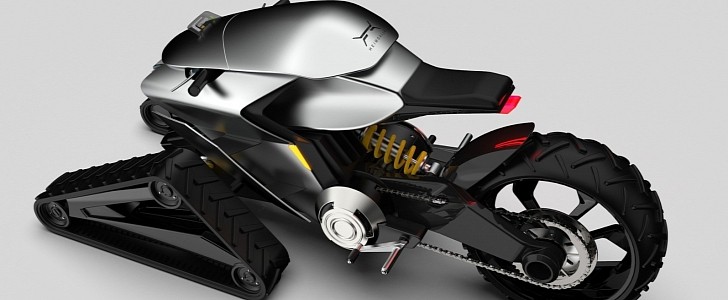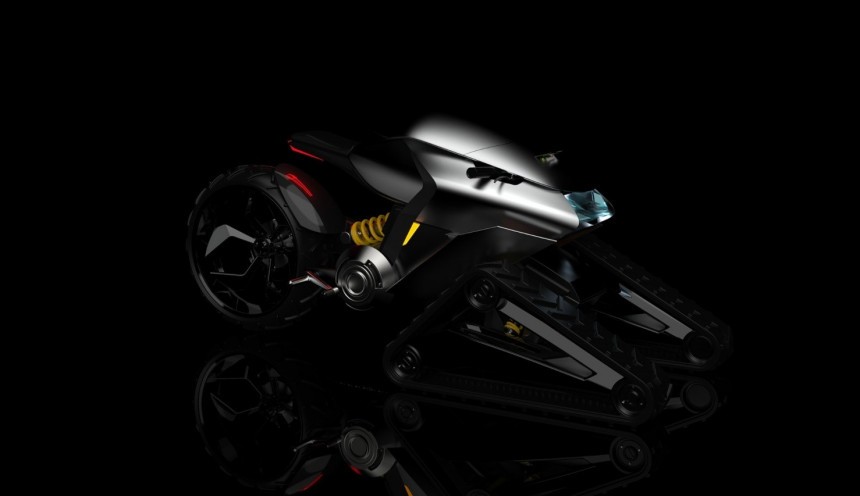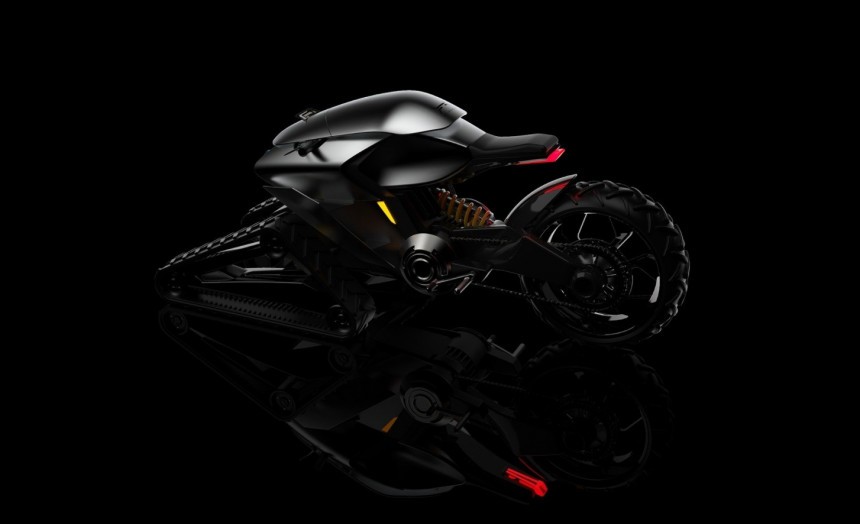Winter is coming folks. Actually, by the look outside my window, winter is already here. Not a problem, though. All you need is this Heimdallr snow mobile. But...
But what!? Well, don’t get your hopes up for what you see in the cover photo, as it is only a concept meant to inspire the next manufacturer or billionaire into producing their own line of these awesome tools.
Now, the reason I call it a tool is because designer Lin Yu Cheng of Taipei has a specific purpose for this vehicle, it’s to be used as an arctic research and exploration vehicle. Currently, arctic researchers and explorers utilize large fossil fuel burning vehicles that are limited on range, speed, and their ability to enter remote regions. The Heimdallr is the solution to all that.
First off, it’s a bit different from other snow mobiles we may be used to. Instead of a track on the rear, this design features not one but two tracks on the front, where the usual skies would be. The rear however still needs to have something to push it along, so the designer included a very motorcycle like wheel. It’s even driven by a chain and includes a huge suspension and even a swingarm.
Now, before you go off the rails about why there is a motorcycle wheel on a snowmobile, it’s not all pointless. Because the front includes the tracks, it’s mainly the rear that steers the vehicle. And what better way to steer than with just one point of contact with the ground. This is made possible by a sort of hinge system that allows the rear to move freely in regard to the front. Oh, and that rear wheel includes a permanent motor, on top of the two already existent secondary motors we find in the tracks. That makes this a 3x3 vehicle that also pushes out 50kW, or about 67 HP.
Funny enough, the entire design is meant to be electric too. But there is an issue with lithium-ion batteries in subzero temperatures. So, to tackle that problem, we find another lead-acid battery to turn on a heating system that brings the lithium battery to operable levels. Once the lithium battery is at functional temperatures, the lead battery switches off. With the now functioning 35kWh lithium-ion, the Heimdallr can reach a range of 155 miles (250km).
But this doesn’t make it very capable for long range riding. Well, it really isn’t meant for long range riding. What it’s meant for is to be more of an assistant vehicle when running into rough terrains where traditional bulky vehicles cannot perform.
Another important factor of the vehicle is its size. It stands no taller than the average person's waist, but still includes a large carrying capacity of over 10-gallons (39l), making it perfect for collecting samples. Or maybe what you’re really doing in the Arctic is just looking for gold.
This usual scenario during such expeditions would mean that explorers and the like would have to possibly take up skis or other alternative transport. And let’s be honest, have you even tried to cover more than 10 miles on cross country skis? That’s what I thought. And even though this is just a concept, there is a reason why it got second place at a Kymco design competition.
Now, the reason I call it a tool is because designer Lin Yu Cheng of Taipei has a specific purpose for this vehicle, it’s to be used as an arctic research and exploration vehicle. Currently, arctic researchers and explorers utilize large fossil fuel burning vehicles that are limited on range, speed, and their ability to enter remote regions. The Heimdallr is the solution to all that.
First off, it’s a bit different from other snow mobiles we may be used to. Instead of a track on the rear, this design features not one but two tracks on the front, where the usual skies would be. The rear however still needs to have something to push it along, so the designer included a very motorcycle like wheel. It’s even driven by a chain and includes a huge suspension and even a swingarm.
Funny enough, the entire design is meant to be electric too. But there is an issue with lithium-ion batteries in subzero temperatures. So, to tackle that problem, we find another lead-acid battery to turn on a heating system that brings the lithium battery to operable levels. Once the lithium battery is at functional temperatures, the lead battery switches off. With the now functioning 35kWh lithium-ion, the Heimdallr can reach a range of 155 miles (250km).
Another important factor of the vehicle is its size. It stands no taller than the average person's waist, but still includes a large carrying capacity of over 10-gallons (39l), making it perfect for collecting samples. Or maybe what you’re really doing in the Arctic is just looking for gold.
This usual scenario during such expeditions would mean that explorers and the like would have to possibly take up skis or other alternative transport. And let’s be honest, have you even tried to cover more than 10 miles on cross country skis? That’s what I thought. And even though this is just a concept, there is a reason why it got second place at a Kymco design competition.











